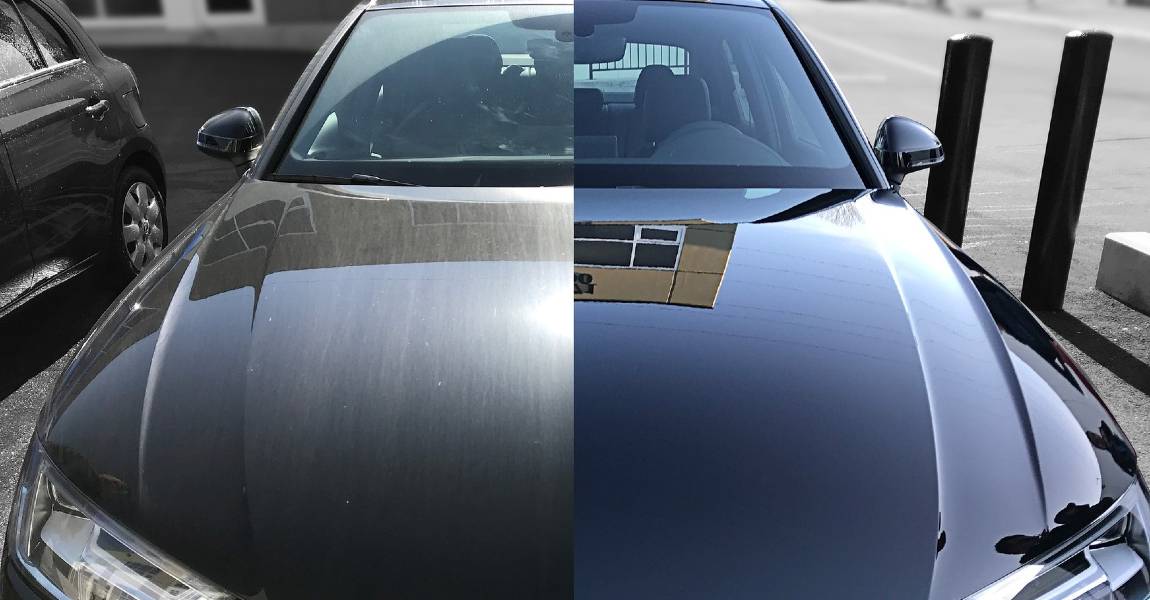Get comprehensive car detailing for a showroom shine.
Get comprehensive car detailing for a showroom shine.
Blog Article
A Comprehensive Guide to the Kinds Of Ceramic Finish on the Market
Ceramic finishings have arised as an essential solution across various industries due to their one-of-a-kind residential properties and applications. As we check out the distinct qualities and applications of these finishings, the implications for performance and long life become increasingly evident, raising inquiries about which kind may finest fit your needs.
Understanding Ceramic Coatings
Ceramic coverings are innovative safety options that have acquired appeal in various sectors, particularly in automobile and aerospace applications. These finishings contain a liquid polymer that, when cured, creates a resilient, hydrophobic layer externally of the substratum. This layer offers improved resistance to environmental impurities, UV radiation, and chemical exposure, consequently prolonging the life and aesthetic appeal of the underlying product.
The essential component of ceramic finishes is silica, which contributes to their solidity and durability. The application process generally involves surface preparation, application of the covering, and healing, which can be accomplished through heat or UV light. As soon as treated, ceramic coverings show phenomenal bonding residential properties, enabling them to stick strongly to a variety of surface areas, including metals, plastics, and glass.
In addition to their safety features, ceramic finishes likewise use simplicity of upkeep. Their hydrophobic nature minimizes the adherence of dust and crud, making cleansing easier and less frequent. Generally, the adoption of ceramic finishings represents a significant development in surface security technology, offering both functional and visual advantages throughout multiple fields.
Sorts Of Ceramic Coatings
Various kinds of ceramic layers are offered, each designed to satisfy certain performance needs and applications - scratch repair sarasota. One of the most usual types consist of:
Silica-based Coatings: These finishes mostly are composed of silicon dioxide and are understood for their sturdiness and chemical resistance. They are widely utilized in automobile and commercial applications.
Titanium Dioxide Coatings: Popular for their photocatalytic properties, titanium dioxide coatings are frequently applied in atmospheres where self-cleaning and antifungal residential properties are preferable, such as in building materials and vehicle coatings.
Zirconia Coatings: Characterized by their high-temperature stability and thermal resistance, zirconia finishings are utilized in applications such as wind turbine engines and high-performance automotive elements.
Alumina Coatings: Displaying outstanding solidity and thermal stability, alumina layers are regularly made use of in wear-resistant applications, consisting of cutting devices and commercial equipment. - Car Detailing
Crossbreed Coatings: Combining the homes of various products, crossbreed finishings offer enhanced efficiency qualities, making them suitable for unique and demanding applications.
Each sort of ceramic finish offers distinctive functions, permitting customers to pick one of the most proper option based on details environmental problems and performance needs.
Benefits of Ceramic Coatings
Ceramic finishings, in particular, deal countless advantages that make them significantly preferred amongst manufacturers and customers alike. These coverings are resistant to scratches, chemicals, and UV rays, making certain that the underlying surface remains safeguarded over time.
In enhancement to resilience, ceramic coverings give exceptional hydrophobic homes, permitting for simple cleaning and upkeep. This water-repellent nature lessens the adherence of dirt, crud, and various other contaminants, which can lengthen the aesthetic appeal and functionality of the surface. Ceramic coverings can considerably boost thermal resistance, making them optimal important site for applications that sustain high temperature levels.

Application Process
When using ceramic coverings, a meticulous approach is necessary to attain optimum outcomes. A tidy surface area guarantees proper bond of the layer.
Once the surface area is prepped, the next action is to use the ceramic layer. This can be done making use of an applicator pad or a microfiber towel, ensuring even protection. It is critical to operate in small areas to keep control and avoid premature curing. The layer must be used in thin layers, as thicker applications can lead to irregular surfaces.
After application, the covering needs a certain curing time, usually ranging from a few hours to a full day, depending on the product. During this time, it is crucial to avoid exposure to dampness or contaminants. Ultimately, a gentle buffing may be required after healing to improve the gloss and eliminate any high places. Complying with these actions vigilantly will maximize the efficiency and durability of the ceramic finish, providing a durable protective layer for the surface.
Upkeep and Longevity
To make sure the longevity and efficiency of a ceramic layer, routine maintenance is vital. Ceramic coverings, understood for their durability and protective qualities, need details care regimens to optimize their lifespan and performance.
Along with learn this here now regular washing, regular examinations are important. Try to find indicators of wear or damages, such as hydrophobic residential or commercial properties reducing or surface area imperfections. If necessary, a light polish may be put on revitalize the finishing without removing it away.
In addition, the application of a booster spray can boost the coating's hydrophobic impacts and restore its gloss. This is especially helpful for layers browse around these guys that have actually remained in usage for an extensive duration. Inevitably, by sticking to these upkeep techniques, one can dramatically expand the life of a ceramic layer, making certain that it remains to give optimal protection against environmental elements and keep the aesthetic allure of the lorry.
Conclusion

Report this page